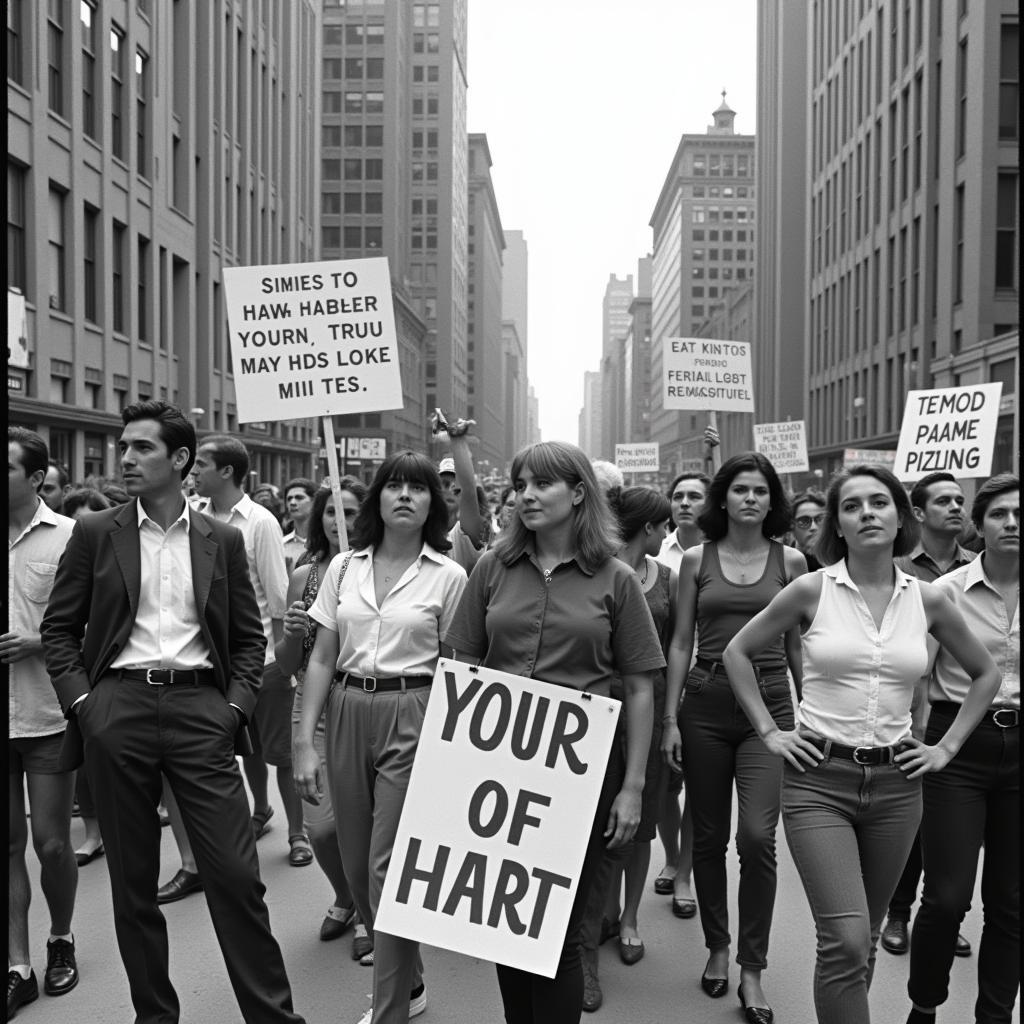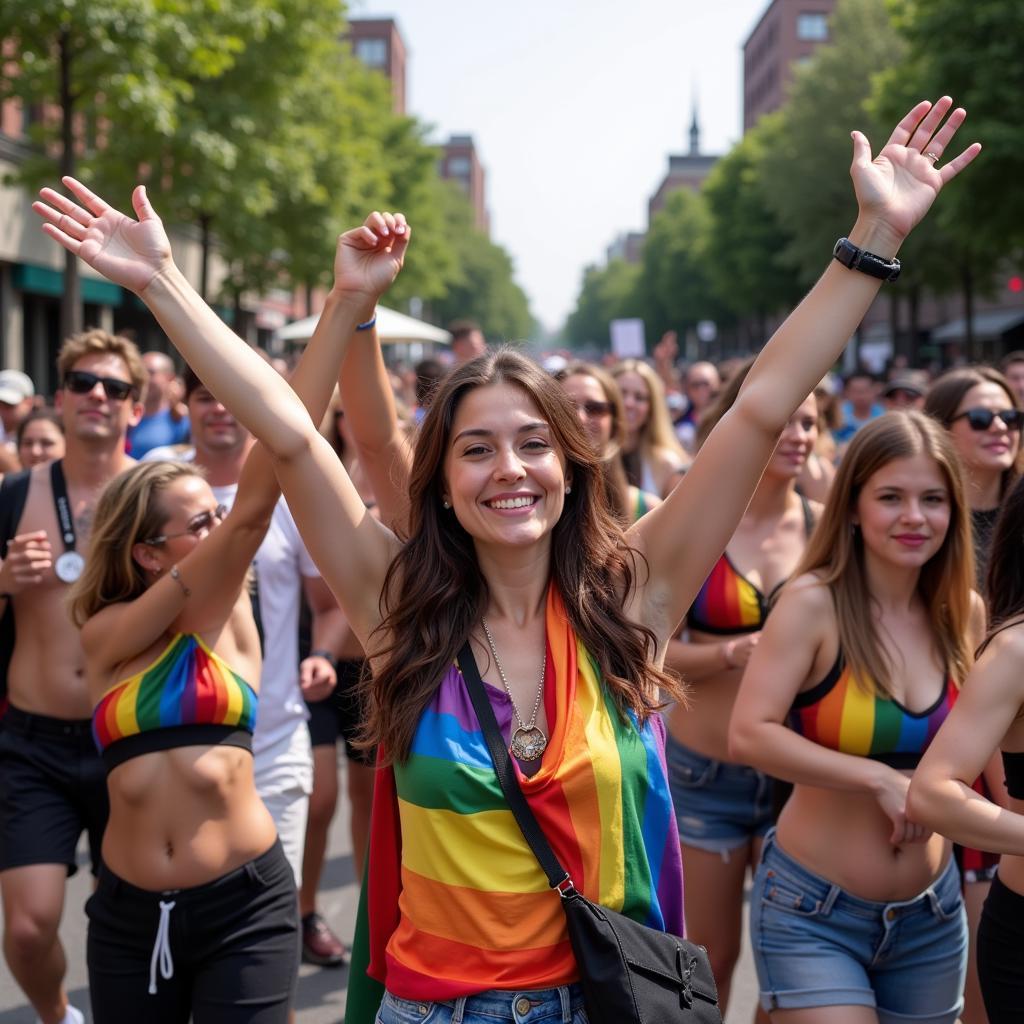Get ready to discover a rainbow of fascinating facts about the LGBTQ+ community that will expand your understanding and appreciation for this vibrant and diverse group! From historical moments to modern-day achievements, we’ll dive into the rich tapestry of LGBTQ+ history and culture, celebrating its resilience, creativity, and impact on society. So, grab your metaphorical rainbow flag and let’s embark on this enlightening journey together!
A Historical Glimpse: LGBTQ+ Milestones and Movements
The history of LGBTQ+ rights is a powerful narrative of struggle, resilience, and triumph. We often hear about the Stonewall Riots, but did you know that LGBTQ+ activism predates this pivotal event?
 A group of LGBTQ+ activists protesting for equality in the 1960s
A group of LGBTQ+ activists protesting for equality in the 1960s
- From Ancient Civilizations to Modern Movements: LGBTQ+ identities have been documented throughout history, with evidence in ancient civilizations like Greece and Rome. The concept of gender fluidity and same-sex relationships has been present across cultures and time periods.
- The Birth of Modern LGBTQ+ Activism: The 20th century saw the emergence of organized LGBTQ+ activism, with groups like the Mattachine Society and the Daughters of Bilitis pushing for legal and social recognition. These organizations challenged societal norms, fought for equal rights, and paved the way for future generations.
- Stonewall Riots: A Defining Moment: In 1969, the Stonewall Riots marked a turning point in the fight for LGBTQ+ rights. These riots, sparked by police brutality against LGBTQ+ patrons of a Greenwich Village bar, ignited a wave of activism and protests that continue to inspire generations of LGBTQ+ advocates today.
Beyond the Headlines: Fun Gay Facts to Expand Your Perspective
Let’s move beyond the well-known stories and uncover some lesser-known but equally fascinating aspects of LGBTQ+ history and culture:
Did You Know?
- The First Gay Rights Organization Was Founded in Germany in 1897: Known as the Scientific-Humanitarian Committee, this organization aimed to decriminalize homosexuality and advocate for the rights of LGBTQ+ people.
- The First Gay Pride March Took Place in 1970: A year after the Stonewall Riots, thousands marched in New York City to commemorate the anniversary and demand equal rights.
- The Gay Liberation Front Was Founded in 1969: This radical group used direct action tactics to challenge homophobia and promote LGBTQ+ liberation.
LGBTQ+ Culture: A Rainbow of Expressions
Beyond history, LGBTQ+ culture is a vibrant tapestry of art, music, literature, and more. It’s a space for self-expression, creativity, and community building.
- The Impact of LGBTQ+ Artists: From groundbreaking authors like James Baldwin to influential musicians like Freddie Mercury, LGBTQ+ artists have made a significant impact on the cultural landscape, pushing boundaries and inspiring generations.
- Pride Celebrations: A Global Phenomenon: Pride events worldwide serve as a platform for celebration, advocacy, and community building. From vibrant parades to cultural festivals, these events showcase the diversity and resilience of the LGBTQ+ community.
- The Power of Storytelling: LGBTQ+ literature, film, and television are increasingly challenging stereotypes and providing authentic representations of diverse experiences. These stories shed light on the joys, struggles, and triumphs of LGBTQ+ individuals, contributing to greater understanding and acceptance.
The Importance of LGBTQ+ Representation and Inclusion
As we continue to learn about LGBTQ+ history and culture, it’s crucial to recognize the importance of representation and inclusion:
- Challenging Stereotypes: Positive and diverse representations of LGBTQ+ individuals in media and society can help dismantle harmful stereotypes and promote understanding.
- Creating Safe and Inclusive Spaces: Ensuring that LGBTQ+ people feel safe, respected, and accepted in all aspects of life is essential for creating a truly inclusive and equitable society.
- Continuing the Fight for Equality: While significant progress has been made, the fight for LGBTQ+ equality continues. Ongoing advocacy and activism are vital in achieving full legal, social, and economic equality for all.
FAQ:
Q: What is the difference between “gay” and “LGBTQ+?”
A: “Gay” refers specifically to men who are attracted to other men. “LGBTQ+” is a broader umbrella term that encompasses lesbian, gay, bisexual, transgender, queer, and other gender identities and sexual orientations.
Q: Why is it important to use inclusive language?
A: Using inclusive language, such as “LGBTQ+” instead of just “gay,” acknowledges the diversity of the community and demonstrates respect for all individuals within it.
Q: How can I be an ally to the LGBTQ+ community?
A: By speaking up against discrimination, learning about LGBTQ+ issues, supporting LGBTQ+ organizations, and using inclusive language, you can be a strong ally and contribute to a more just and equitable world for everyone.
 A vibrant LGBTQ+ Pride parade filled with colorful floats and enthusiastic participants
A vibrant LGBTQ+ Pride parade filled with colorful floats and enthusiastic participants
Conclusion:
Exploring Fun Gay Facts is more than just learning about a group of people – it’s about understanding and appreciating a rich tapestry of history, culture, and human experience. By embracing the LGBTQ+ community’s contributions and advocating for equal rights and inclusion, we can create a world where everyone feels seen, valued, and empowered to live their authentic lives.
Remember, this is just the beginning of your journey into the colorful world of LGBTQ+ history and culture. Keep exploring, keep learning, and keep advocating for a world that celebrates and embraces everyone!